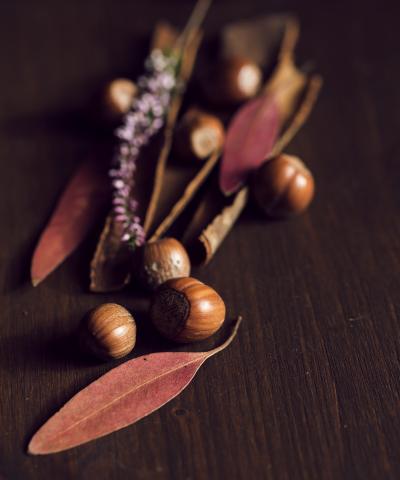In the transitional months of Autumn, as we leave the hot days of Summer behind and approach the Winter season, we can use scent in our homes to evoke the scents of Autumn in our environment and bring warmth and comfort in anticipation of the cooler weather ahead.


The scents of Autumn
Autumn in Australia is generally quite warm and is arriving later in the year - more a case of the advancement of the calendar rather than any real weather change. Cooler nights and crisp mornings don't really arrive until well into mid-Autumn, a little earlier in the southern most states of the country.
Autumnal scents of nature such as the rousing morning or evening air, damp earth and gum trees, ochre and rich brown leaves when they're crushed or spicy dishes from the kitchen, herald the demise of Summer and the prospect of shorter days and the Winter season to come.
April and May are very active months in the garden cycle; a major harvest period of the year and also a time to prepare for the success of the following growing season.
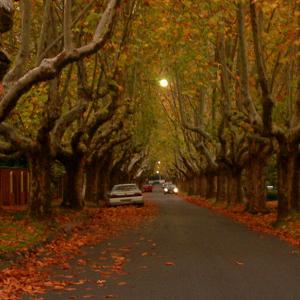

When we smell things in our environment we integrate what we are also seeing, hearing and feeling on both a physical and emotional level. How we interpret these stimuli in their context contributes to what we experience as our scent memories of Autumn.
As temperature and humidity drop in the Autumn months, smells both in our environment and inside our homes have less odour intensity due to fewer mobile volatile odour molecules in the air.
We also detect scent using our own unique combination of olfactory receptors. We each have around 350 to 400 olfactory receptors but what those receptors can express varies from person to person. The way in which we perceive the quality of an aroma is singular on both a genetic level and the particular meaning that an individual has assigned to it.

Assessing the scent of your space
Before using any type of scent in your home, it is important to take into consideration the odour intensity of the items and furnishings, the “base notes“ of your space. We become accustomed to the scent of our home due to the process of olfactory adaptation, where our nose temporarily is unable to distinguish particular odours after prolonged and constant exposure to an airborne compound, so as not to overload the brain with redundant information.
To combat this, take a good sniff of your space after you're been out for most of the day and assess its various scents.
The simplest thing you can do to improve the scent of your home is to open windows and doors and let the fresh air in, particularly if you've been out all day or after rain in older homes. This allows sunlight to dry things out and an air flow to circulate around your home and remove undesirable smells.
If you have identified any strong or overpowering odours, especially in the kitchen or bathroom, there are plenty of recipes using inexpensive ingredients such as baking soda, vinegar and charcoal that you can use to neutralise any bad smells.


Essential oils for Autumn
Using essential oil scents in our home can make us feel better about how our home functions and how we feel about where we live. They are also tools in our modern way of living and increasingly digital world to strengthen our links to nature and synchronise with the turning of the seasons. The smell of your home is also one of the first things people generally notice.
As it's still fairly warm in Autumn, essential oils that are used during the Summer period are good choices for your oil burner or diffuser.
The freshness of these types of oils can be given warmth, moisture and texture with the addition of spicy, resinous, woody or earthy essential oils; a complement to the fresh, brisk aromatic Autumn air in the morning and night.
To begin with, choose a few oils you are familiar with to blend together and then experiment with different combinations. Use a minimum of three and no more than six oils in your blend as more than this can muddle and spoil the harmony of your aromatic composition. You may want to write down your feelings, impressions or scent associations and memories you have of Autumn in a journal and then choose the essential oils that mirror your thoughts.

Essential oil suggestions:
Spice: ginger, black pepper, cinnamon leaf, clove bud, nutmeg, cardamom, coriander, bay laurel.
These oils add depth, spice, heat and layers to a blend. They are comforting aromas, harmonising with our desire during this time for tenderness and cosseting as the temperature falls. Base note spice oils are fairly strong, so only small quantities are needed in a blend for a warming nuance.
Resin: frankincense, benzoin, myrrh, opoponax, elemi.
These types of essential oils act as base notes in a blend, supporting and enhancing the cozy and cocooning ambience of the spice essential oils.
Herbal: lavender, thyme, rosemary, basil, roman chamomile, sweet marjoram, clary sage, sweet fennel, myrtle.
These oils impart some freshness in a composition and are a reflection of the change of weather and types of food we like to eat in Autumn- think of hearty casseroles and stews or baked fruit pies, comfort food aromatised with herbs and spices. Herbal oils like sweet marjoram, clary sage and sweet fennel can also give a slight warming effect to a diffuser blend.
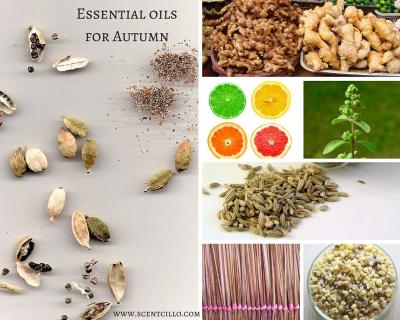
Wood: sandalwood, cedarwood Atlas, rosewood, amyris, Australian Buddha wood.
Like the resins, these oils act as base notes; infusing a blend with their mellowness, sturdiness and sensuality.
Floral: Choose essential oils that have warmer notes or fruity or spicy nuances e.g ylang ylang, white champaca (magnolia flower), rose, linden blossom C02. Neroli and geranium can also be useful for an uplifting and refreshing effect to counterbalance the heaviness of spicy, resinous or woody oils.
Citrus/Lemon scented: bergamot, mandarin, pomelo, sweet orange, blood orange, clementine, tangerine, litsea cubeba (may chang), lemon myrtle, lemon scented eucalyptus.
These oils add brightness, lift and a gentle olfactory warmth to compliment the other essential oils, especially spice oils.

Earth: vetiver, patchouli, violet leaf, carrot seed.
Prominent aromas in the garden are those of decay and moist earth as countless micro organisms purposely decompose spent vegetation and return nutrients to the soil. Mimic this smellscape with the rich, damp, earthy aromas of these essential oils.
Geosmin: smell of the earth
Geosmin is an organic compound with an earthy aroma or flavour produced by soil-dwelling bacteria, called Actinomycetes. It contributes to the scent of petrichor that is smelt in the air when rain falls after a long period of dryness or when soil is disturbed. Geosmin is also responsible for the earthy flavour of beetroot and the muddy scent in certain freshwater fish like carp.
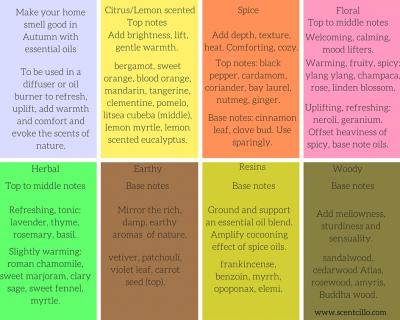
Essential oil blends
I've included some of my favourite diffuser recipes you can use at home or in the workspace for inspiration when creating your own Autumnal ambience.
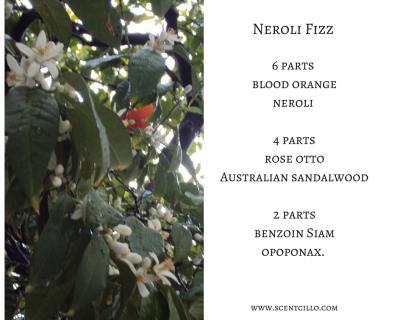
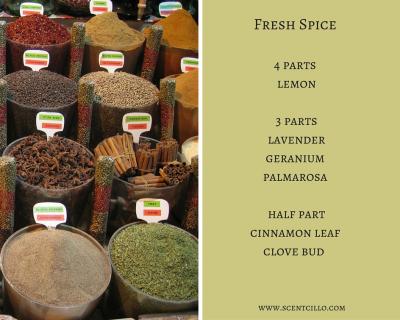
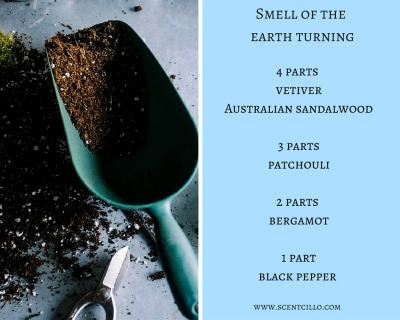
Scentcillo Oracle and Tango essential oil blends are suitable choices to diffuse in your space during Autumn. Use these blends to create comfort, incandescence and coziness.
Oracle essential oil blend uses frankincense with other rich, spicy devotional scents such as myrrh, cedarwood atlas, patchouli and cinnamon leaf, balanced with the lightness and sparkle of the citrus clementine essential oil - the perfect compliment to the crisper mornings and nights of Autumn heading our way.
For those that prefer a more warming floral scent, Tango essential oil blend intermingles the sensual tones of ylang ylang and palmarosa with the uplifting scent of tangerine. A lovely blend to diffuse on wet days or after dark.
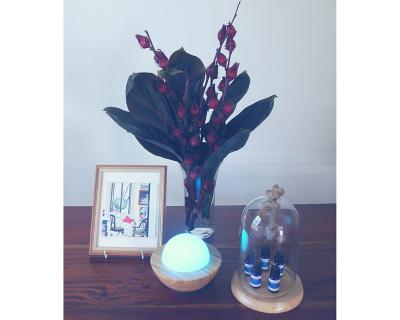
Tips when vaporising your essential oils:
To counteract the effect of sensory adaptation or olfactory fatigue to your choice of fragrance; switch the types of scents you use in your home from time to time, use different oil blends in different parts of your house and use your scent intermittently throughout the day.
Did you like this post?
Sign up in the top right hand corner of this page to get information on essential oils, styling and designing with scent, diffuser recipes, specials and promotions sent straight to your inbox AND your $10 coupon that you can spend on your first purchase with us.
Further reading
- 5 simmer pot recipes to make your home smell like Fall. Apartment Therapy.
- 8 homeware trends for Autumn/Winter 2016. Interiors Addict.
